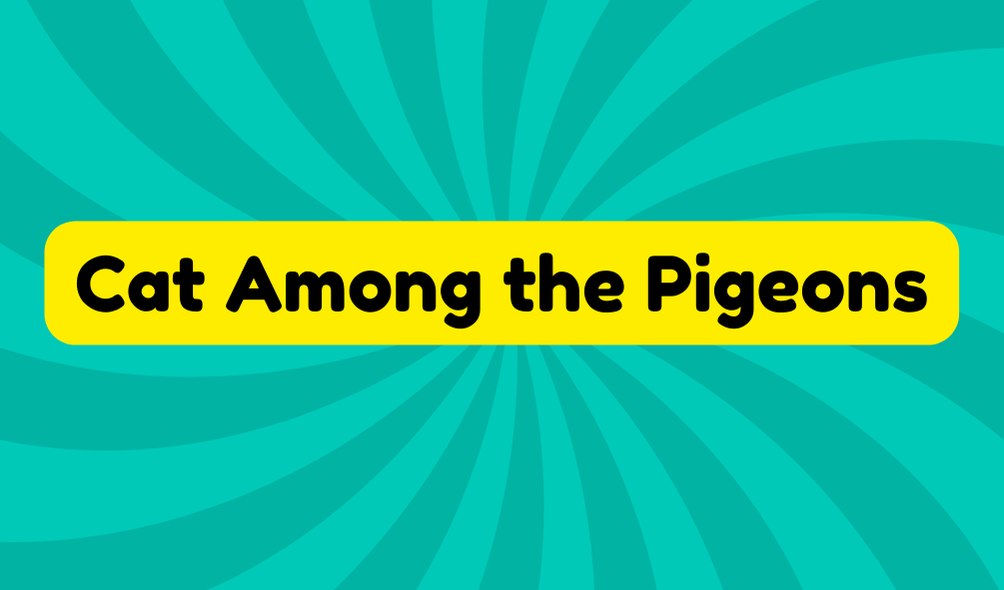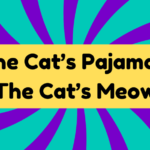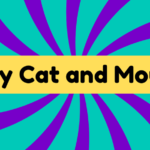When you hear "cat among the pigeons," think of disruption that stirs up chaos. This phrase means creating turmoil through unexpected actions or statements. It originated in British colonial India, symbolizing the disturbance caused by a cat among confined birds. Today, you see it when controversial social media posts spark debates or when public figures make careless remarks. Understanding this phrase helps you recognize the impact of words in our interconnected world. It's a reminder that even subtle provocations can lead to emotional upheaval, encouraging a more thoughtful approach to communication. There's much more to uncover about its relevance today.
Synonyms
When you want to describe an action that disrupts a peaceful situation, using synonyms can effectively convey that sentiment. Think about how certain phrases can illustrate those disruptive actions and provoke emotional responses. Here are three vivid alternatives:
- Throw the cat among the pigeons – This captures the chaos instigated by an unexpected disturbance.
- Set the cat among the pigeons – A subtle nudge toward controversy can trigger worried reactions.
- Flutter the dovecotes – This emphasizes gentle yet impactful disruption, stirring the calm.
Using these expressions not only enriches your communication but also reflects the intensity of the situation. We can see that language shapes our understanding of conflict, illustrating how easily harmony can be shattered by a careless word or action.
Example of Sentences
Examples of how disruptive actions can manifest in everyday scenarios illustrate the potency of the expression "put the cat among the pigeons." Foreign comments on cultural practices can ignite public outrage, while political leaders' false promises often lead to widespread discontent. You might witness these disruption dynamics when:
- A celebrity makes a controversial statement, sparking outrage.
- A company announces unexpected layoffs, creating panic among employees.
- Political scandals unfold, leaving communities in chaos.
These examples reflect the emotional responses people experience under stress and uncertainty. The ripple effects resonate deeply, illustrating how easily harmony can shatter. In today's interconnected world, the stakes are higher, and a single misstep can send shockwaves throughout society, revealing our collective vulnerability to disruption.
Origin
Originating from British colonial India, the expression "put the cat among the pigeons" reflects a unique practice where individuals would bet on a cat's actions against pigeons confined in a cage. This idiom first appeared in 1706, deeply rooted in its historical context and showcasing the cultural significance of disrupting harmony within communities. Betting on a cat's unpredictable behavior captured the essence of societal dynamics. It forces you to contemplate how certain actions, much like the unruly cat, can stir emotions and provoke unrest among groups. In a world increasingly driven by innovation, this phrase serves as a reminder. When you introduce a disruptive element, you challenge the status quo and spark potential chaos, often exposing underlying tensions.
Collocations
Understanding the origins of "put the cat among the pigeons" leads us to explore its collocations, which can enhance our comprehension of how this phrase interacts with other words in various contexts. These idiomatic expressions carry cultural implications, highlighting society's reactions to disruption. Imagine the following scenarios:
- Politicians throwing the cat among the pigeons at a debate.
- A friend causing a stir by sharing an unpopular opinion.
- A journalist's article that sets the community ablaze with controversy.
These examples show how the phrase interacts with tension and emotional responses. Recognizing these collocations not only deepens your understanding but also unravels the complexities behind language, giving you a clearer picture of its purpose in communication.
How to Use in Everyday Language
Incorporating the phrase "put the cat among the pigeons" into your everyday language can add a colorful touch to conversations about disruption or conflict. Using idioms effectively enhances communication techniques and showcases your creativity. Consider these examples to spark inspiration:
| Scenario | Example Sentence | Context |
|---|---|---|
| Office Politics | "His remarks really put the cat among the pigeons." | Challenging workplace norms |
| Family Gatherings | "Asking about careers put the cat among the pigeons." | Tense family dynamics |
| Social Events | "The surprise announcement put the cat among the pigeons." | Unsettling the group |
| Classroom Discussions | "Her controversial opinion put the cat among the pigeons." | Challenging classroom peace |
When using this phrase, be mindful of the emotional consequences it might incite.
Why Is It Still Relevant Today?
The phrase "put the cat among the pigeons" remains relevant today because it captures the essence of human interaction in a complex world. Its cultural significance lies in how it reflects our tendency to stir the pot, whether in politics, social media, or everyday conversations. In a rapidly changing landscape, you can encounter modern applications of this phrase everywhere. Consider how a controversial tweet can ignite debates or provoke frustrations among online communities. This idiom serves as a reminder of the impact our words and actions can have on those around us. As you navigate this interconnected world, keep in mind how easily you can create discord. Awareness of your influence is essential for fostering constructive dialogue in today's society.







